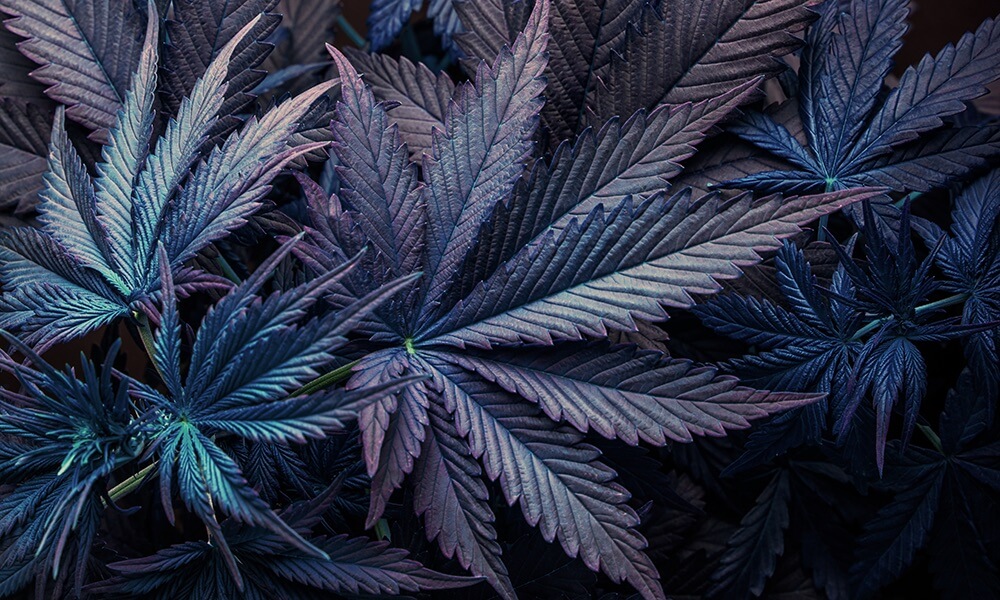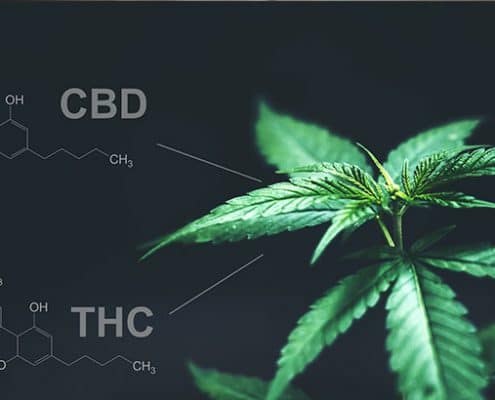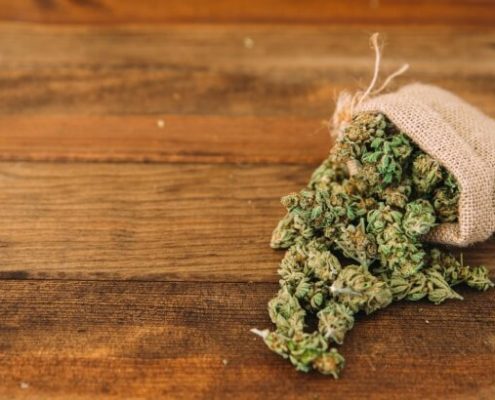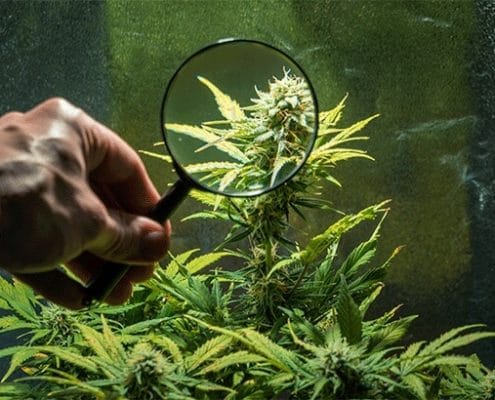Is Cannabis Addictive? 15 Dec, 2020
Is Cannabis Addictive?

So, essentially, most people who use cannabis don’t get addicted, but some people can develop cannabis use disorder, which may sometimes involve dependency or addiction. Below, we’re taking a closer look at why that is and what scientific research can tell us about average cannabis users vs. people with cannabis use disorders.
Defining Addiction

The definition of addiction in general is a bit vaguer than the definition of drug addiction, which is what people are wondering about when they ask if cannabis is addictive. So, for the sake of specificity, let’s look at the defining characteristics of drug addiction.
According to the Mayo Clinic, drug addiction (also called substance use disorder) is “a disease that affects a person’s brain and behavior and leads to an inability to control the use of a legal or illegal drug or medication.”
The Mayo Clinic lists the symptoms of drug addiction as follows:
- Feeling that you have to use the drug regularly, daily or several times a day
- Experiencing intense urges for the drug
- Needing more of a drug overtime to get the same effect
- Taking larger amounts of the drug over a longer period of time than you intended
- Making sure you always have a supply of the drug
- Spending money on the drug, even if you can’t afford it
- Failing to meet obligations and work responsibilities because of drug use
- Cutting back on social or recreational activities because of drug use
- Continuing to use the drug even though it’s causing physical harm, psychological harm, or problems in your life
- Doing things that you wouldn’t normally do to get the drug, such as stealing
- Doing risky activities while under the influence of the drug
- Spending large amounts of time on getting the drug, using the drug, and/or recovering from the effects of the drug
- Being unable to stop using the drug
- Experiencing withdrawal symptoms when you try to stop using the drug
Many cannabis users would look at these symptoms and say that cannabis is not addictive, since they don’t experience any of these symptoms themself. That’s because, according to both anecdotal evidence and scientific research, the majority of cannabis users don’t become addicted to cannabis. A recent study on cannabis use found that most marijuana users don’t lose control of their marijuana use, as they can use the amount of marijuana they want to use when they want to use it and they get the results they expect when they use it. Another recent study found that most marijuana users don’t even experience cannabis tolerance or cannabis withdrawal.
With that said, not everyone has the same experience using cannabis. A small percentage of people can develop something called cannabis use disorder, which can sometimes involve symptoms of addiction.
What is Cannabis Use Disorder?

According to the DSM-5, cannabis use disorder is a behavioral disorder that’s associated with chronic cannabis use. It features a “problematic pattern of cannabis use leading to clinically significant impairment or distress.” To be diagnosed with cannabis use disorder, a person needs to have exhibited at least two of the following symptoms within the last year:
- Cannabis is often taken in larger amounts or over a longer period than was intended.
- There is a persistent desire or unsuccessful efforts to cut down or control cannabis use.
- A great deal of time is spent in activities necessary to obtain cannabis, use cannabis, or recover from its effects.
- Craving, or a strong desire or urge to use cannabis.
- Recurrent cannabis use results in failure to fulfill role obligations at work, school, or home.
- Continued cannabis use despite having persistent or recurrent social or interpersonal problems caused or exacerbated by the effects of cannabis.
- Important social, occupational, or recreational activities are given up or reduced because of cannabis use.
- Recurrent cannabis use in situations in which it is physically hazardous.
- Cannabis use continues despite knowledge of having a persistent or recurrent physical or psychological problem that is likely to have been caused or exacerbated by cannabis.
- Tolerance, as defined by either: (1) a need for markedly increased cannabis to achieve intoxication or desired effect or (2) a markedly diminished effect with continued use of the same amount of the substance.
- Withdrawal, as manifested by either (1) the characteristic withdrawal syndrome for cannabis use or (2) cannabis is taken to relieve or avoid withdrawal symptoms.
Cannabis use disorder is graded based on its severity. If someone meets 2 to 3 of the above criteria, they fit the range for mild cannabis use disorder. If they meet 4 to 5, they fit the range for moderate cannabis use disorder. Then, if they meet 6 or more of these criteria, they fit the range for severe cannabis use disorder.
A person would only need to meet two of the criteria of cannabis use disorder to be diagnosed with it. As you can see from the criteria listed above, that means that this disorder can look very different on a case-by-case basis. It also means that, while this disorder is often associated with dependence, you don’t actually have to be dependent– or addicted– to cannabis to be diagnosed with cannabis use disorder. For example, if you have a tolerance to cannabis and a “strong desire to use cannabis,” you could technically get diagnosed with this disorder, even though having just those two symptoms may not cause problems in your life.
The fact the threshold for receiving a cannabis use disorder diagnosis is rather low is something that has drawn criticism from some mental health professionals, cannabis researchers, and those within the cannabis field.
Roger Roffman, an addiction researcher and Professor Emeritus of Social Work at the University of Washington, has commented on the DSM-5 diagnostic criteria for cannabis use disorder, saying, “If there’s a difficulty with it, it’s overreacting when just one or two of these indicators are present.” He further explained that the fact that someone who has a neutral or positive experience with cannabis could be diagnosed with cannabis use disorder minimizes the fact that some people experience “far more than one or two of these diagnostic criteria.” “We need to be compassionate to people for whom a moderate or severe disorder exists, and we need good science to understand it and find ways of helping,” Roffman said.
Why Do Some People Get Marijuana Use Disorder?
The majority of people who use cannabis don’t struggle with cannabis use disorder, cannabis dependency, or cannabis addiction. So, why is it that some people do?
Unfortunately, we don’t know exactly why some people experience marijuana use disorder while others do not. There just hasn’t been enough research done on the topic to conclusively pin down the cause of cannabis use disorder.
Some speculate that underage cannabis use can make cannabis dependence more likely, as there is data that supports this idea. According to the National Institute on Drug Abuse (NIDA), research suggests that people who start using cannabis in their teens are twice as likely to become dependent on it. However, the data on this is minimal– and it’s also on cannabis dependency, not on cannabis use disorder or cannabis addiction.
Another thing that people speculate about is if rising tetrahydrocannabinol (THC) levels may impact marijuana use disorder in the future. According to NIDA, the average THC content found in United States marijuana has jumped up quite a bit over the last thirty years, going from 4% in the early 1990s to 15% in 2018. Some have expressed concern that this higher THC content could affect the prevalence of cannabis use disorder– but, since we don’t know what causes this disorder, there’s really no research to back this idea up. We don’t know if THC content impacts cannabis use disorder in any way. We also don’t know whether or not cannabinoid content of any kind (THC, CBD, or otherwise) affects physical dependency, mental dependency, or addiction.
This is one area of cannabis research that is sorely lacking. We simply need more research on cannabis use disorder, cannabis dependency, and cannabis addiction to be able to understand why some people seem to struggle with cannabis use disorder while most people do not. Hopefully, the ever-spreading legalization of recreational and medical marijuana will make this kind of research more possible and, therefore, more prevalent.







